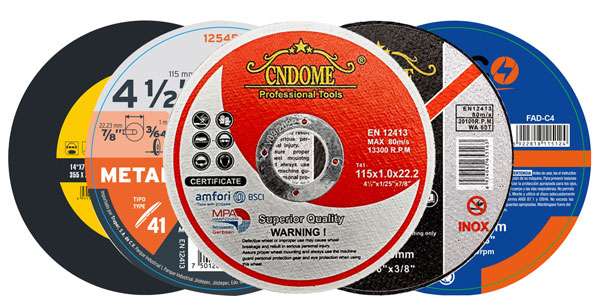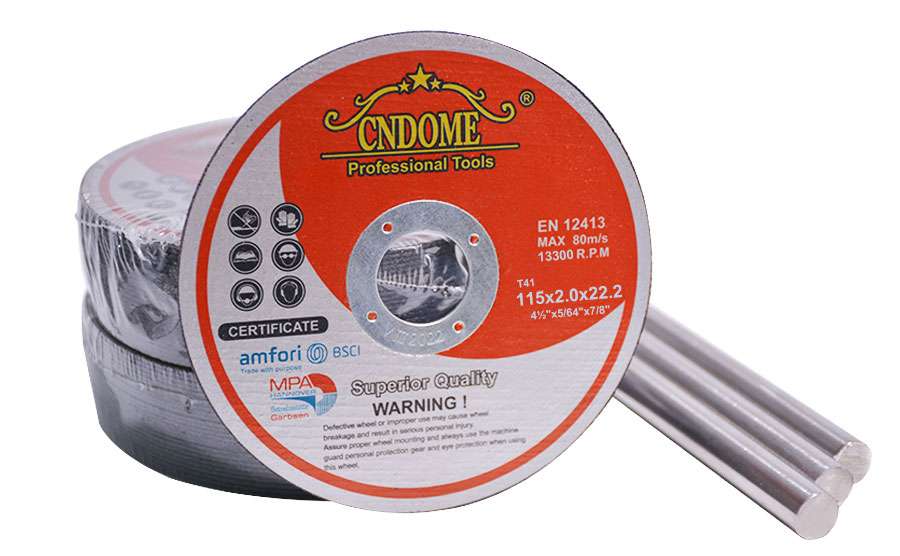Cutting discs, also known as cutting wheels or cut-off wheels, are essential tools in the world of metalworking and fabrication. Among the various sizes available, the 115mm (4.5 inches) cutting disc is one of the most popular due to its versatility and compatibility with standard angle grinders. One crucial factor that significantly impacts the performance and application of these discs is their thickness. In this blog, we will explore the different thicknesses of 115mm cutting discs, their specific uses, and the benefits they offer.
Thickness Variations and Their Applications
1. 1.0mm to 1.6mm Discs: Precision Cutting
- Applications: Thin metal sheets, thin-walled pipes, and profiles.
- Advantages:
- Minimal Material Loss: The thin profile ensures minimal kerf, which is the width of the cut. This is particularly beneficial when working with expensive materials where waste needs to be minimized.
- Fast Cutting Speed: Thinner discs require less force to cut through materials, resulting in faster cutting speeds and increased efficiency.
- Cleaner Cuts: These discs produce smoother and cleaner cuts with less burring, reducing the need for extensive finishing work.
2. 2.0mm to 2.5mm Discs: Balanced Performance
- Applications: General-purpose cutting of metal sheets, pipes, and small sections.
- Advantages:
- Versatility: These discs offer a balance between cutting speed and durability. They are suitable for a wide range of materials and applications, making them a go-to choice for many users.
- Durability: Slightly thicker than the ultra-thin discs, they provide increased durability and longevity, making them suitable for more demanding cutting tasks.
3. 3.0mm to 3.5mm Discs: Heavy-Duty Cutting
- Applications: Thick metal sections, rebar, and heavy-duty structural steel.
- Advantages:
- Strength and Stability: The increased thickness provides greater stability and strength, allowing these discs to handle more substantial and challenging cutting tasks without deforming.
- Longer Lifespan: These discs tend to last longer than their thinner counterparts, as they can withstand higher levels of wear and tear.
Choosing the Right Thickness
When selecting the appropriate thickness for your 115mm cutting disc, consider the following factors:
- Material Type and Thickness: Thinner discs are ideal for cutting thin materials quickly and cleanly, while thicker discs are better suited for cutting through thicker, denser materials.
- Cutting Speed vs. Durability: If you need fast, precise cuts and are working with thin materials, opt for a thinner disc. For more rugged applications where durability is paramount, choose a thicker disc.
- Tool Compatibility: Ensure that your angle grinder can accommodate the specific thickness of the cutting disc you intend to use. Most standard grinders can handle a range of disc thicknesses, but it’s always best to check the manufacturer’s specifications.
Safety Considerations
Regardless of the thickness, always prioritize safety when using cutting discs:
- Proper PPE: Wear appropriate personal protective equipment, including safety goggles, gloves, and hearing protection.
- Secure Workpiece: Ensure the material being cut is securely clamped to prevent movement during cutting.
- Correct Speed and Pressure: Avoid using excessive force or operating the grinder at incorrect speeds, as this can cause the disc to shatter or overheat.
Conclusion
The thicknesses of 115mm cutting discs play a pivotal role in determining its suitability for various tasks. By understanding the specific applications and advantages of different thicknesses, you can make informed decisions to enhance your cutting efficiency, precision, and safety. Whether you are a professional fabricator or a DIY enthusiast, selecting the right cutting disc will ensure optimal performance and results in your metalworking projects.




